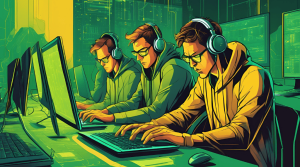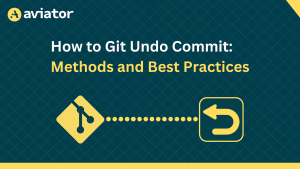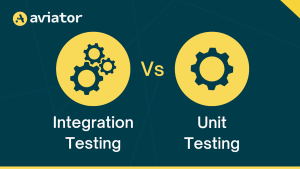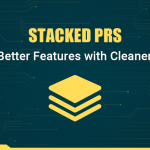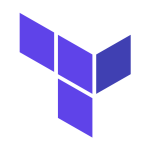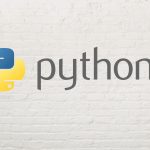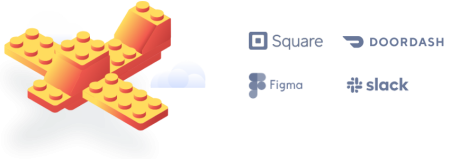What Will Software Engineering Look Like in 2027?
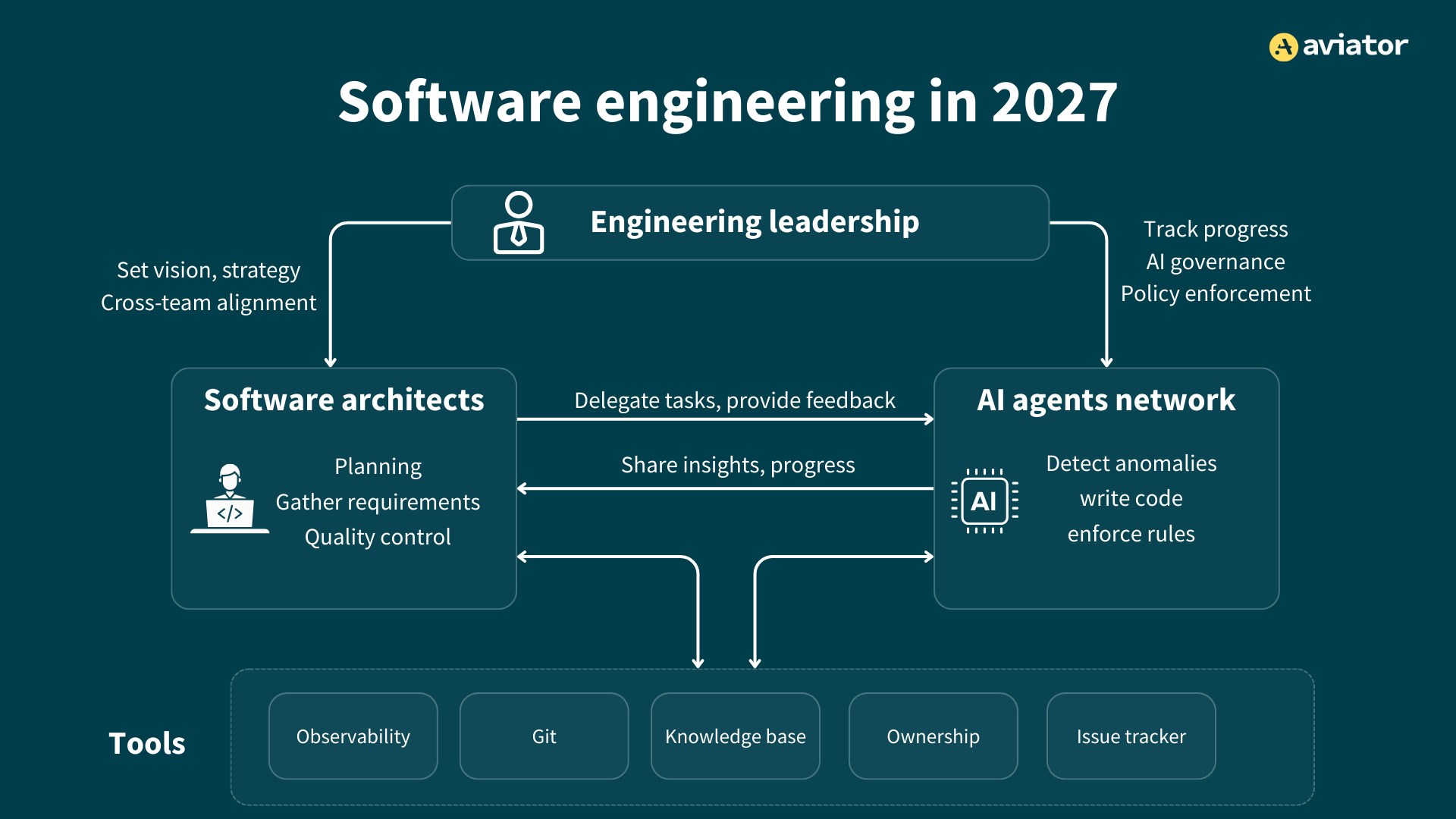
Pair programming with AI is a necessity, not a novelty. Getting familiar with the company’s AI stack is part of the onboarding process.
The expectations from engineers keep rising. They are expected to work with AI tools and have strong product instincts and systems thinking. Software architects manage lean teams of engineers and AI agents and are responsible for architecture and turning ideas into reality. Code reviews are more important than ever. Vibe coding is mainstream, but has evolved.
Welcome to the state of software engineering in 2027!
Two years may not seem like much, but in the fast-moving world of AI, it’s plenty of time for big shifts. It’s close enough to feel real, but far enough that we can have some fun imagining where today’s trends and buzzwords might lead.
The Current State of AI Tools
Google’s Gemini 2.5 Pro was recently announced, with significant improvements in coding and thinking-related tasks. With Cursor, V0, Bolt, and likes, “vibe coding” is catching up, and now more people in the world have access to building software.
Enterprises, on the other hand, are still in the testing phase, figuring out what actually works for them. Coding assistants like Copilot, Cursor, and Windsurf are making their way into enterprise workflows. But for now, the evaluation of AI tools tends to be driven more by sentiment than solid analysis.
The use of AI tools also varies by seniority. Senior engineers use them for very targeted tasks while providing feedback and iterating on them, and junior engineers tend to ask more specific questions, in a way, replacing the Stack Overflow searches with AI chat assistants.
Things are evolving every day, and we are seeing some interesting use cases of AI-powered security audits, code migrations, and code reviews.
So, where does that put us in 2027?
AI-Augmented Teams
By 2027, AI pair programming will transition from novelty to necessity. The company’s “AI stack,” AI collaboration, and prompt engineering will become part of the onboarding process for engineers. AI upskilling will also become necessary to familiarize oneself with the company’s “AI stack.” These skills will mostly be transferable.
The Rise of Software Architects
Engineering teams would become much leaner. Jeff Bezos talked about the “two pizza rule” – the ideal team size being the number of people you could feed with two pizzas. As we move forward, we will start seeing one-pizza engineering teams.
Teams will become leaner because a lot of work could be offloaded to AI with supervision. This will give rise to the role of software architects, who are responsible for system architecture and converting ideas to reality. They will be responsible for taking PRDs and collaborating with AI for architecture design, security analysis, and complex debugging.
In the future, these software architects will act as the “managers of the AI agents” and be responsible for guiding, reviewing, and verifying the work of the agents. Their responsibilities would also overlap with those of the product managers, and they would be directly responsible for the organization’s business goals. It’s even possible that there would be a role blending the work of a software architect and a product manager.
AI = An Army of Software Interns
The AI models will continue improving, but it’s unlikely that in two years, they will reach 100% accuracy. That means, even though there will be more reliance on AI tools to do the “grunt work,” we will still see work done with proper guardrails and human verification. That said, we will likely start more autonomous work, with checkpoints for humans to verify the work.
Think of this as having a large army of software interns to whom you assign specific tasks and ask them to execute. The agents will take on these tasks, plan, and write or rewrite the code while asking for feedback on certain checkpoints along the way. That’s why code reviews would become a crucial part of this process.
AI Code Reviews
If a large part of the code is written by AI, would we still rely on AI-based code reviews?
AI code reviews would be important to find and address issues more autonomously earlier in the cycle. However, AI code review would be just another agent collaborating with the AI code editing agent to perform modifications. Ultimately, all the code would still have to go through a human review cycle, and AI code reviews would act as smart linters that validate the code earlier in the cycle.
Beyond Vibe Coding
Vibe coding, meaning AI enabling semi-skilled developers or non-developers to build end-to-end applications, is blowing up today. By 2027, it will become mainstream, but it will grow into a much more structured way of software development with two completely separate use cases:
1. Solopreneurs
Casual coding for solopreneurs, content creators, and hobbyists building specialized apps and running sustainable businesses with a very small team. These solopreneurs would leverage AI-expert freelancers to help solve issues when they get stuck.
2. Enterprises
Enterprises with software architects and more complex AI workflows, where hundreds of AI agents perform thousands of operations guided by these architects.
Since the cost of building software will decrease, there will be a strong emphasis on experimentation and personalization. Software architects would simulate various architectures to see which ones perform better, and run large-scale A/B testing where user behaviors would constantly evolve the product.
Continuous Verification Replaces Testing
Traditional unit testing will evolve into continuous verification, where:
- Formal methods become accessible through AI assistants
- Automated property-based testing generates test cases based on specifications
- Runtime verification ensures systems maintain invariants during operation
This shift will fundamentally change how we think about software quality, moving from “catching bugs” to “proving correctness.”
Skills for 2027 Software Engineers
Software developers or computer science grads will not only be expected to work with modern AI tools but also have strong product instincts and systems thinking. As these roles converge, the expectations from engineers would keep rising.
To stand out in such an environment as a recent grad, it would be ideal to experiment a lot more and build prototypes and concepts that are not just side projects in a semester, but real small businesses with proven value and some traction.
In some cases, these graduates would build successful solo businesses and may never get into the 9-5 corporate jobs.
Other Factors Impacting Engineering
Remote Work
Remote work, which took off during COVID, will continue to be a common trend, although we will still see strong interest in companies looking to bring employees back to offices. Since software engineering will be more than feature building and writing code, it will require a deeper understanding of business needs and collaboration with business stakeholders.
Quantum Computing
While quantum computing won’t be mainstream by 2027, forward-thinking organizations will incorporate quantum-aware approaches into their engineering practices:
- Simulation environments to test algorithms on virtual quantum hardware
- Hybrid classical-quantum architectures for specific problem domains
- Educational programs to prepare engineers for the quantum transition
The most innovative companies will have established small teams exploring quantum applications, particularly in cryptography, optimization problems, and machine learning.
I May Be Wrong
The pace of AI advancement is anything but predictable, so not all of these predictions may come true. And that’s okay. Some tools we’re bullish on today might hit unforeseen limitations. Others, currently under the radar, might emerge as game-changers.
By 2027, we may see serious limitations or security concerns with these AI technologies, so that enterprises will shift towards security and compliance over lean AI-augmented teams. Or that AI tools will plateau in capability, shifting the focus back to human craftsmanship.
Maybe “vibe coding” will hit regulatory roadblocks. Or perhaps we’ll see a resurgence of craft software as a reaction to over-automation.
But that’s the fun and anxiety of these thought experiments. They help us prepare for what might be, even if the path diverges. One thing is for sure, software engineering is transforming, and staying adaptable, curious, and open to change will be far more valuable than betting on any one future.

